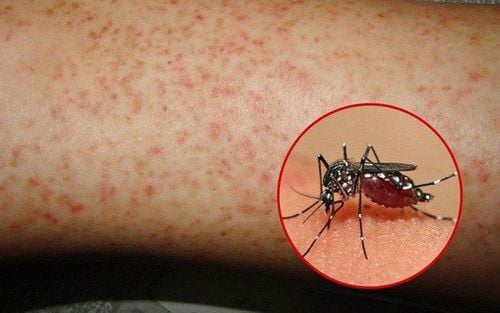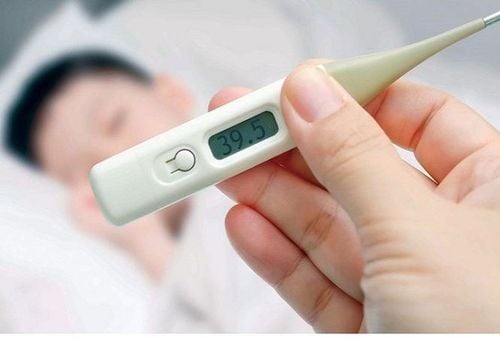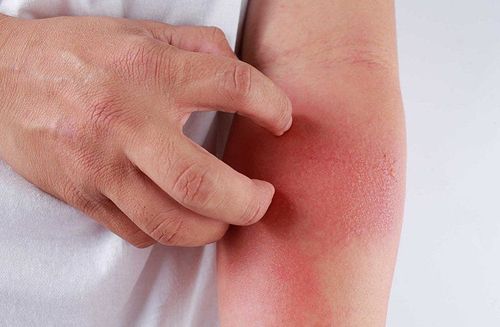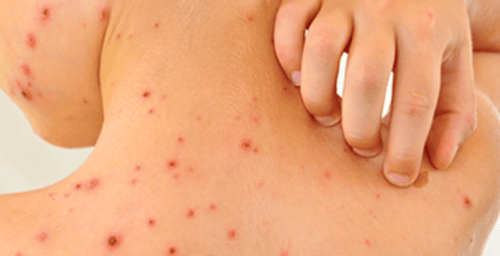This is an automatically translated article.
This article was professionally consulted with Master, Doctor Nguyen Thi Nhat - Infectious Disease Specialist - Department of Medical Examination & Internal Medicine - Vinmec Hai Phong International General Hospital.Around June every year, when the first rains of the season begin to appear, it is also a favorable time for mosquitoes to develop, causing dengue fever. In addition to symptoms of high fever, red spots on the skin, hemorrhagic fever is a symptom that few people pay attention to, but it is extremely dangerous.
1. At what stage is thrombocytopenia hemorrhagic fever?
Dengue fever will usually progress through three stages:In the first 2-3 days: The patient has a high fever. headache, body aches, like other viral fevers and distinguishable only by testing. From the end of the 3rd to the 7th day: the patient's fever subsides, but complications such as increased vascular permeability cause hemoconcentration, thrombocytopenia, can cause bleeding of different degrees. Thus, dengue fever often causes thrombocytopenia in the 4-7 day period of the disease. From the 7th day: The above symptoms will recover, the patient may appear skin rashes and itching. Itchiness may persist for a few days. During this stage, the platelet count gradually returns to normal, later than the white blood cell count.

2. Severe dengue causes severe thrombocytopenia
The dengue virus that causes hemorrhagic fever has four types: DEN 1, DEN 2, DEN 3, DEN 4. If a person is first infected with a certain type of virus, the course is usually quite mild. If the next infection with any other virus remains, the body will react strongly and may lead to complications.Usually, 80-90% of dengue patients have a spontaneous course, without complications. 10-20% may appear serious complications such as increased vascular permeability causing fluid drainage, blood concentration, even leading to shock. The most common complication is low blood platelets, making it difficult to stop bleeding. If the platelets are too low, it will lead to natural bleeding under the skin, nosebleeds, tooth roots, even dangerous internal bleeding (stomach, brain...).
It can be seen that, in the dangerous phase of dengue fever, complications of thrombocytopenia may occur. Some women in the "red light" period may lose more blood than usual, should be closely monitored the number of platelets in the blood and the extent of blood loss, if necessary, platelet and blood transfusions can be prescribed. time. In some cases of pregnant women with dengue, severe thrombocytopenia can cause bleeding in the placenta, if severe, can lead to miscarriage.
Dengue fever patients with black stools should be examined and tested immediately, whether there is gastrointestinal bleeding or not. If this complication occurs, the disease can progress very complicated and dangerous.
3. How to increase platelet count naturally when having dengue fever?
The normal number of platelets in the blood is 150,000 - 400,000/microliter of blood. Symptoms that indicate a low blood platelet count are: bruising, bleeding from the nose or gums, ongoing bleeding from a cut, blood in the stool, and a skin rash. There are many ways to increase platelet count naturally without medication. Some of the foods below help increase platelet count best.3.1 Foods Rich in Vitamin C Consuming foods high in vitamin C can help increase the platelet count in the body. Vitamin C has antioxidant properties, we need to meet the body's need for vitamin C from 400 - 2000mg per day with foods such as: oranges, spinach, broccoli...
3.3. Foods rich in anti-inflammatory and antioxidant substances A diet rich in substances: vegetables, whole grains, organic beans... will support blood production, help neutralize harmful free radicals and thus helping to deal with low platelet count.
3.4. Folate-rich foods A folate deficiency can lower blood platelets. Folate is needed for healthy cell division in the body. Foods rich in folate are: asparagus, whole grains, oranges, and spinach. These are the best foods to increase platelet count.
3.5. Foods rich in vitamin A Vitamin A is essential for keeping platelets healthy and forming proteins in the body, healthy proteins that help with cell division and cell growth. Foods rich in vitamin A include: Pumpkin, carrots, sweet potatoes...

3.7. Foods rich in amino acids Foods rich in amino acids help increase platelets, which is beneficial to the process of thrombosis, which is the process by which the body creates new blood cells inside.
3.8. Dates Dates help to improve the condition of low platelets in the blood because they contain a lot of iron and essential nutrients, helping to increase the number of platelets naturally.
3.9. Apricots Eating apricots is a natural way to increase the number of platelets in the body because apricots are rich in iron. Eat a bowl of apricots at least twice a day.
3.10. Oysters contain zinc that helps increase the number of blood cells and platelets in the body, improving the immune system.
3.11. Whole grains Whole grains are high in nutrients, vitamins and minerals that help increase blood platelets naturally.
3.12. Foods rich in Vitamin K Vitamin K is essential for the maximum growth of cells in the body. Platelets only last for 10 days and then new platelets need to be produced to replace the lost cells. Foods high in vitamin K are: liver, kale, eggs.
Please dial HOTLINE for more information or register for an appointment HERE. Download MyVinmec app to make appointments faster and to manage your bookings easily.














